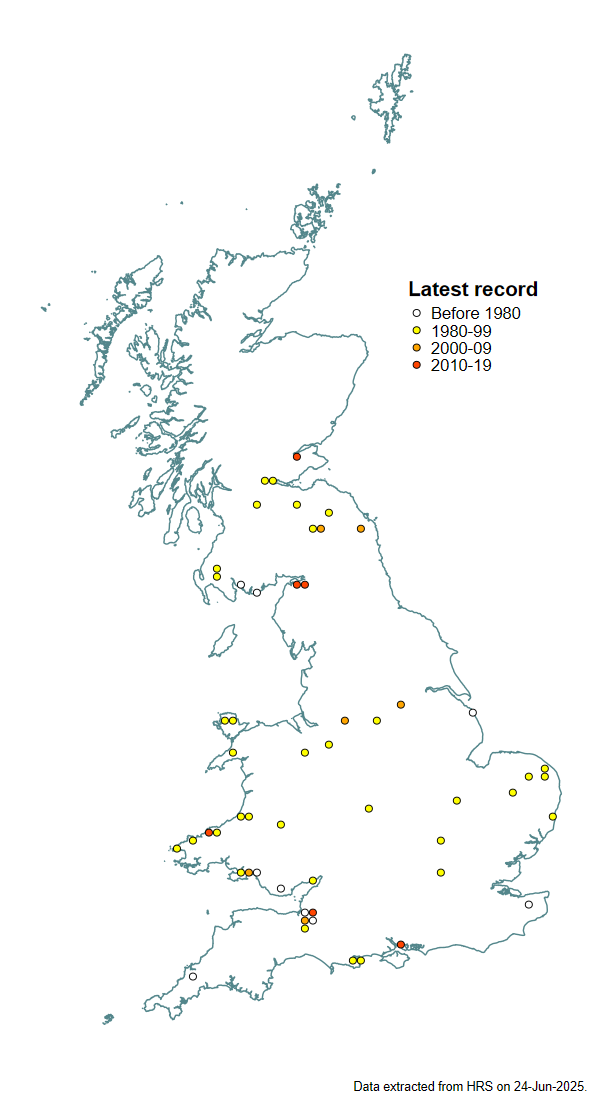Parhelophilus consimilis (Malm, 1863)
Identification
Identification difficulty = 3. ![]()
![]() according to Ball & Morris, 20241
according to Ball & Morris, 20241
Synonymy
Helophilus consimilis Malm in Coe(1953)2.
Biology
This is a wetland species and occurs in habitats that reflect a transition between fen and bog, erring on the side of nutrient-poor acid waters and poor fen. Adults fly rapidly around, and settle on, emergent vegetation and visit flowers such as Bog Bean Menyanthes trifoliata, buttercups Ranunculus sp. and Marsh Cinquefoil Potentilla palustris. The larvae of this genus are 'long-tailed', a modification that allows the animal to breathe whilst living entirely submerged. To date this species' larva appears not to have been found.
Flight period
The following plots show the number of unique records per week excluding those reported to be of immature stages.

Status
Lower Risk (Nationally scarce) - Ball & Morris, 20143. Vulnerable (RDB2) - Falk, 19914 and Shirt, 19875.
Distribution
There are scattered records from southern Scotland south to South Somerset (Westhay Moor), Dorset (Studland), Cornwall, East Kent and East Anglia (including Thompson Common and Sutton Broad Fen).

-
Ball, S., & Morris, R. (2024). Hoverflies of Britain and Ireland. WILDGuides (3rd ed.). Oxford: Princeton University Press. ↩
-
Coe, R. (1953). Diptera: Syrphidae. Handbooks for the Identification of British Insects, 10(1), 1–98. ↩
-
Ball, S., & Morris, R. (2014). A review of the scarce and threatened flies of Great Britain. Part 6: Syrphidae. ( No. 9). Species status (pp. 1–130). Peterborough: JNCC. ↩
-
Falk, S. (1991). A review of the scarce and threatened flies of Great Britain. ( No. 39). Research and Survey in Nature Conservation (pp. 1–194). Peterborough: NCC. ↩
-
Shirt, D. (Ed.). (1987). Red Data Books: 2. Insects. Peterborough: NCC. ↩